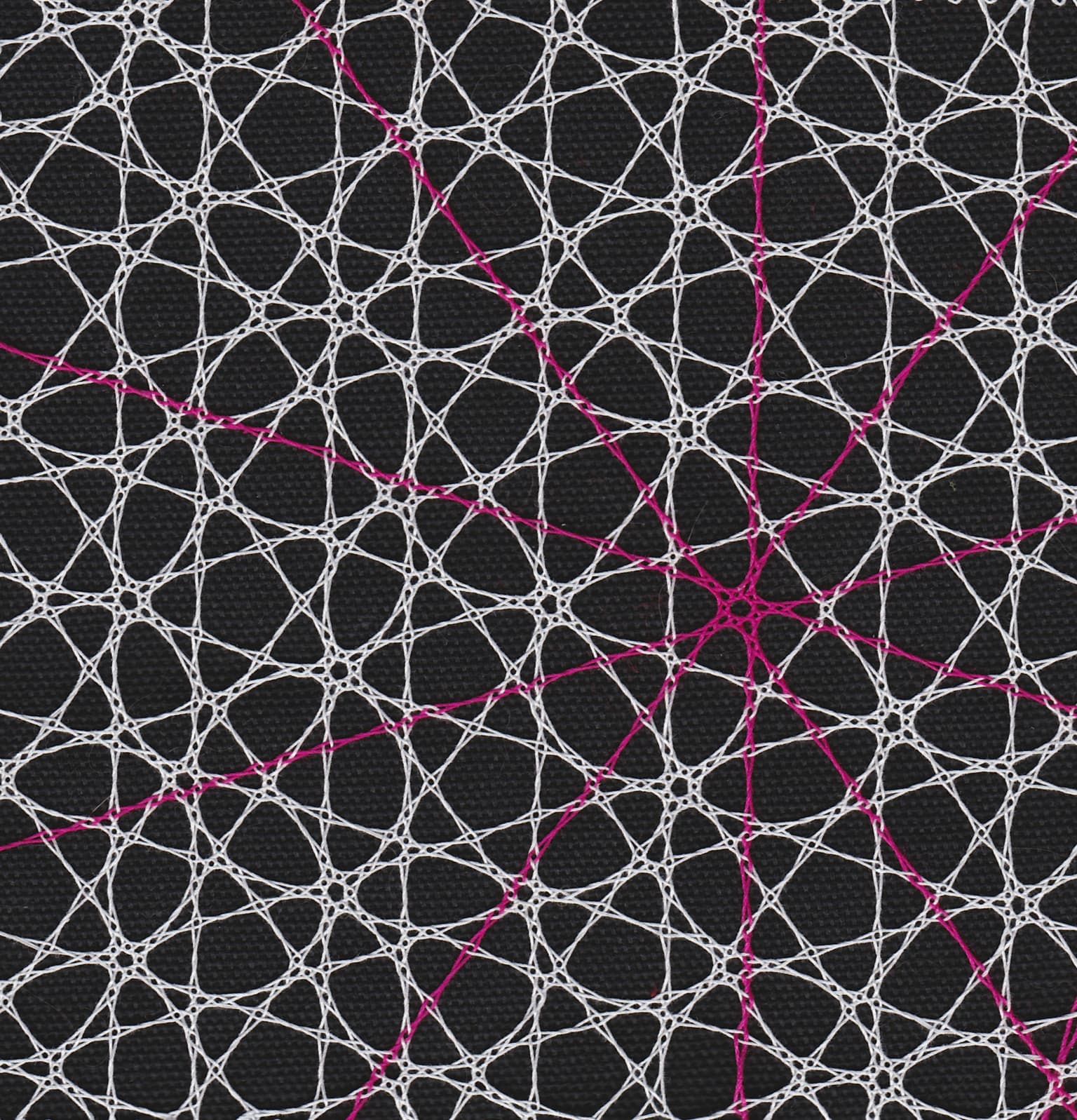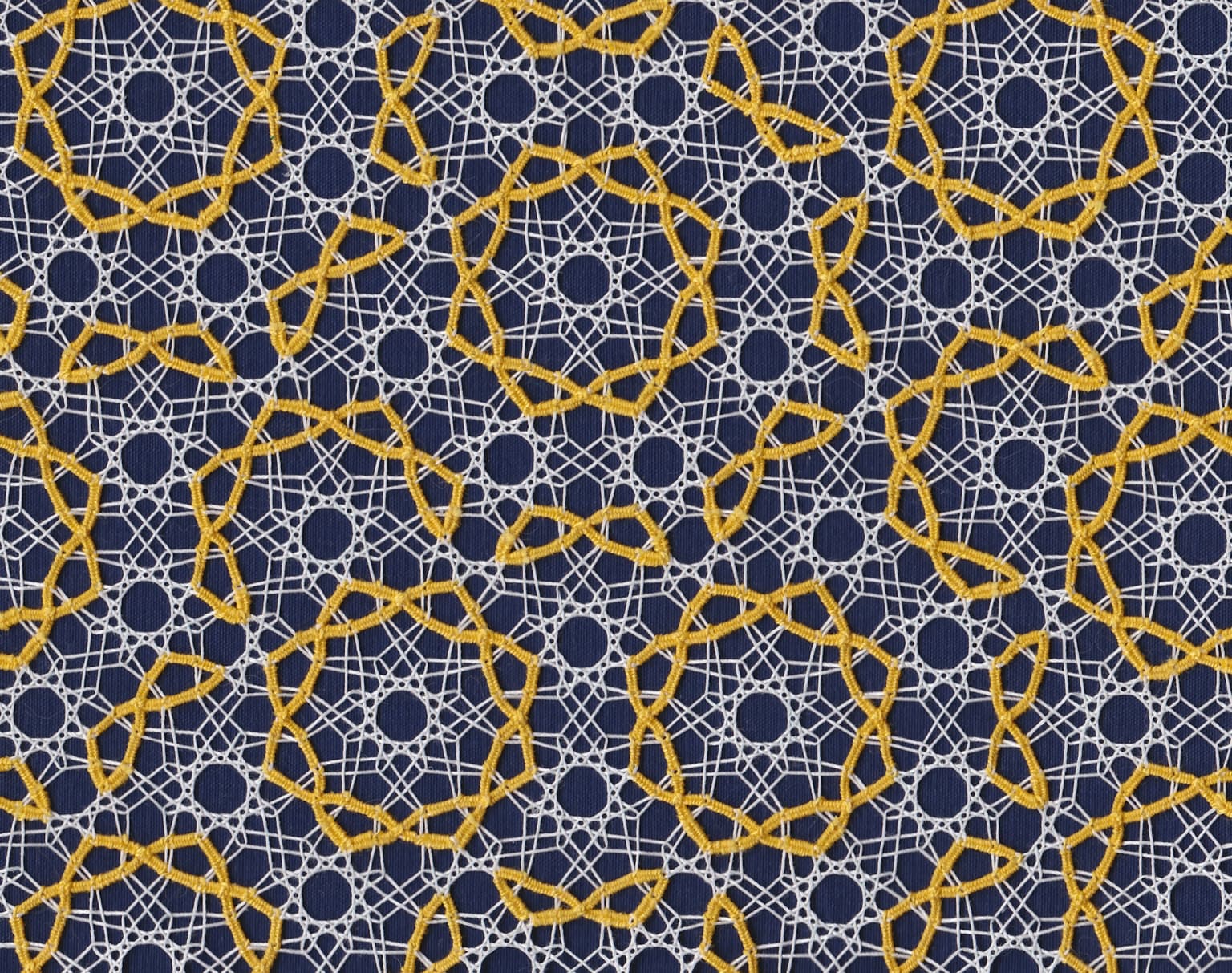Veronika Irvine
Artists
Veronika Irvine
Postdoctoral Fellow
Cheriton School of Computer Science, University of Waterloo
Waterloo, Canada
Statement
Bobbin lace, a 500-year-old art form, features delicate patterns formed by alternating braids. Veronika is a computer scientist and a lacemaker. She has developed a mathematical model to describe bobbin lace tessellations as a drawing of a 2-regular directed graph and a mapping from the vertices of the graph to braid words. With her current work, she has gone beyond traditional periodic lace patterns to find quasiperiodic tilings that can be expressed in lace.
Artworks

Ammann's spiderweb
21 x 21 cm
Bobbin lace in cotton thread
2019
This piece is based on the Ammann bar decoration of the Penrose P3 tiling which is also based on the dual of a quasiperiodic tiling. In this case, the generalized dual method forms the relationship between the tiling and the bars. Pink threads highlight the five different sets of parallel lines. Where they meet, they form a pink pentagram. The pink pentagram is contained in a white pentagon which forms the heart of a larger pentagram and so on. Can these concentric pentagrams stretch out to infinity? There is another point in this patch of lace where a similar set of concentric pentagrams grows from a white centre. You may also be able to spot circular shapes in the lace which correspond to the quasi-unit-cell of this pattern.

A patch of nodding bur-marigold
21 x 21 cm
Bobbin lace in cotton thread
2019
Using traditional bobbin lace techniques, I was interested in creating a pattern that was repeating but not periodic. I was able to extend a mathematical model (developed earlier) and prove that such patterns exist. The example here is a patch of quasiperiodic bobbin lace based on the dual of an Ammann-Beenker tiling, the dual created using the centroid of each face. To emphasize the repeating elements of the design, I used a grand Venetian cord, a braid in which two yellow threads wrap around to cover two white threads. The yellow and white threads are worked simultaneously with white threads continuous from top to bottom.